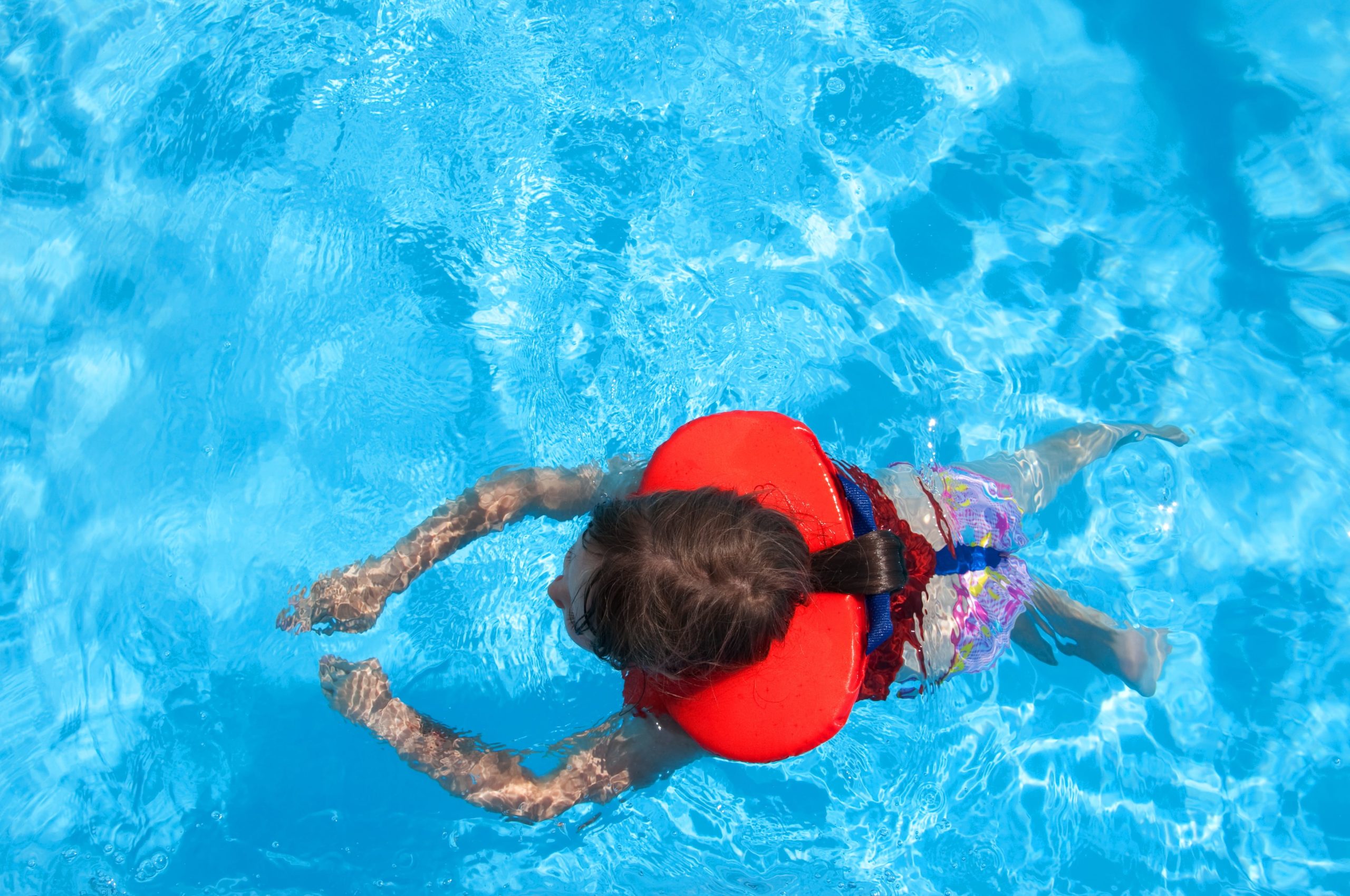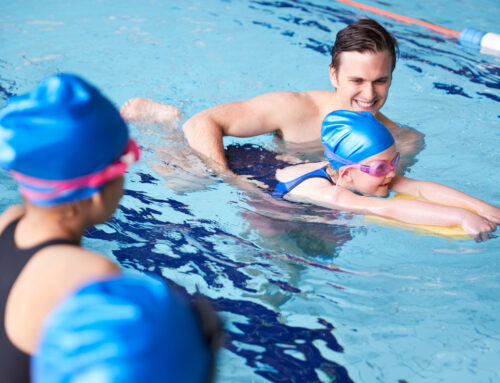
Let’s dive in! While summer is a great time for vacations and outdoor activities for families, basic swimming and lifesaving education are crucial to keeping kids safe during these summer months. However, in Florida, prevention of drowning is important for every season. When a child drowns, the outcome is sadly often fatal. However, if you’re ever in an unsafe situation in the water with your child, their chances of survival are higher if they are removed quickly and resuscitated immediately.
Most importantly, you should never leave your child unattended, especially around any body of water like pools, lakes, or beaches. It takes only seconds to lose sight of your child, and 90% of drownings occur when a child walks out the door without anyone noticing. That means that you MUST have safeguards that control access to water around your home. Little ones learn quickly, so make sure that all areas of your backyard, if you have one, are locked, including the often-missed doggie doors.
What Other Water Safety Measures Can You Take to Protect Your Child?
CPR Training: CPR training is an essential tool that every parent should know in case their child is ever in need of it. Many organizations, such as the American Red Cross or the American Heart Association, offer online and in-person CPR training courses.
Life Jackets: Always ensure that your child has a life jacket or floatation device on, especially while boating. In the state of Florida, all children under six years old are required to wear a personal flotation device in any vessel or boat that’s less than 26 feet in size. Luckily, there is a nationwide Life Jacket Loaner Program available for parents to rent life jackets and go boating safely with their family. Beyond using life jackets on boats, children should generally use life jackets in and around any natural bodies of water. Beginner swimmers should use life jackets around swimming pools as well. Make sure that the life jacket is the right size for their age and worn as instructed, with all straps belted properly. (A quick tip: Most life jackets have weight restrictions on the side panels.) Life jackets can actually help not only children, but also adults of all ages, by reducing the drowning risks and improving swimming capabilities. Never rely solely on foam toys or air-filled flotation devices to support anyone at sea.
Beach Safety: Children swimming at the beach should only be allowed when a lifeguard is on duty. Also, it’s important to teach your child about rip currents, which are quite common on beaches. If they get caught in a rip current, they should swim parallel and then swim to shore once out of the current. If there’s a storm, seek shelter, and never stay in the water if there is lightning. Never let your child swim in canals or streams, but most important of all, never let your child swim alone!
When is the Right Time to Start Learning to Swim?
A child or infant can typically be enrolled in swimming lessons as soon as they turn four months, but it is never too late to start! Search your local newspapers, ask your friends for recommendations, or search for swimming schools/lessons in your county. The YMCA provides different aquatic classes, including swim starters (six months to three years), swim basics, and swim strokes. Typically, during these water safety programs, basic safety lessons are taught over the course of eight, 40-minute sessions. This way, adults and children learn important skills for being in and around water like floating and blowing bubbles and doing a freestyle stroke and front crawl. These water programs may also include safety lessons like CPR, identifying a safe place to swim, water rescue techniques, and survival swim skills.
Why Is It So Important to Teach Water Safety to Children?
Unfortunately, more children die from ages one to four from drowning than any other cause of death, not including birth defects. Drowning is the third leading cause of death in school-aged children (five to 14 years old) and 360,000 people die from drownings every year. About 60% of drowning deaths are seen in people under 30 years old. This data shows that drowning can happen in seconds and to anyone at any age, any time there is access to water.
Water Safety Resources for Broward County Residents
Broward County has an average of eight drowning fatalities each year, among children ages one through four. If you are a resident of Broward County, the Children’s Services Council has partnered with the Broward County SWIM Central program to provide a coupon for $40 off, to help offset the cost of swimming lessons for children. Click here to find out how to get access to the coupon. If you are not a resident of Broward County, we encourage you to research local water safety programs around your area.
Keep Your Kids as Safe as Possible This Summer
Most children who die from drowning wandered away from a supervised area and entered the water alone. In Florida, more fatal and nonfatal drownings occur during the spring and summer months. However, the reality is that drownings can happen at any time of the year. Parents should do what they can to help keep kids stay as safe as possible this summer! If you have any questions, be sure to run them by your pediatrician, and they’ll try to help in any way they can.

Dr. Ashley Van Putten is a proud member of the TopLine MD Alliance practicing Pediatrics in Broward County.
References:
- CDC: Drowning Prevention
- YMCA: Water Safety for Kids
- HealthyChildren.org: Swim Safety Tips
- Boat U.S. Foundation: Life Jacket Loaner Program
- Florida Health: Drowning Prevention
- The Children’s Services Council: Water Smart Broward
The TopLine MD Alliance is an association of independent physicians and medical practice groups who are committed to providing a higher standard of healthcare services. The members of the TopLine MD Alliance have no legal or financial relationship with one another. The TopLine MD Alliance brand has no formal corporate, financial or legal ties to any of the affiliated physicians or practice groups.



